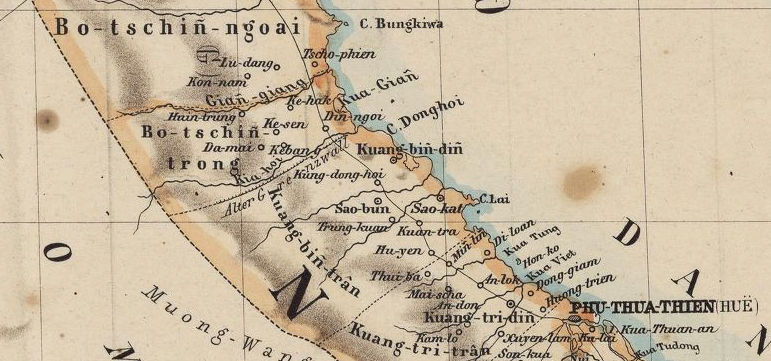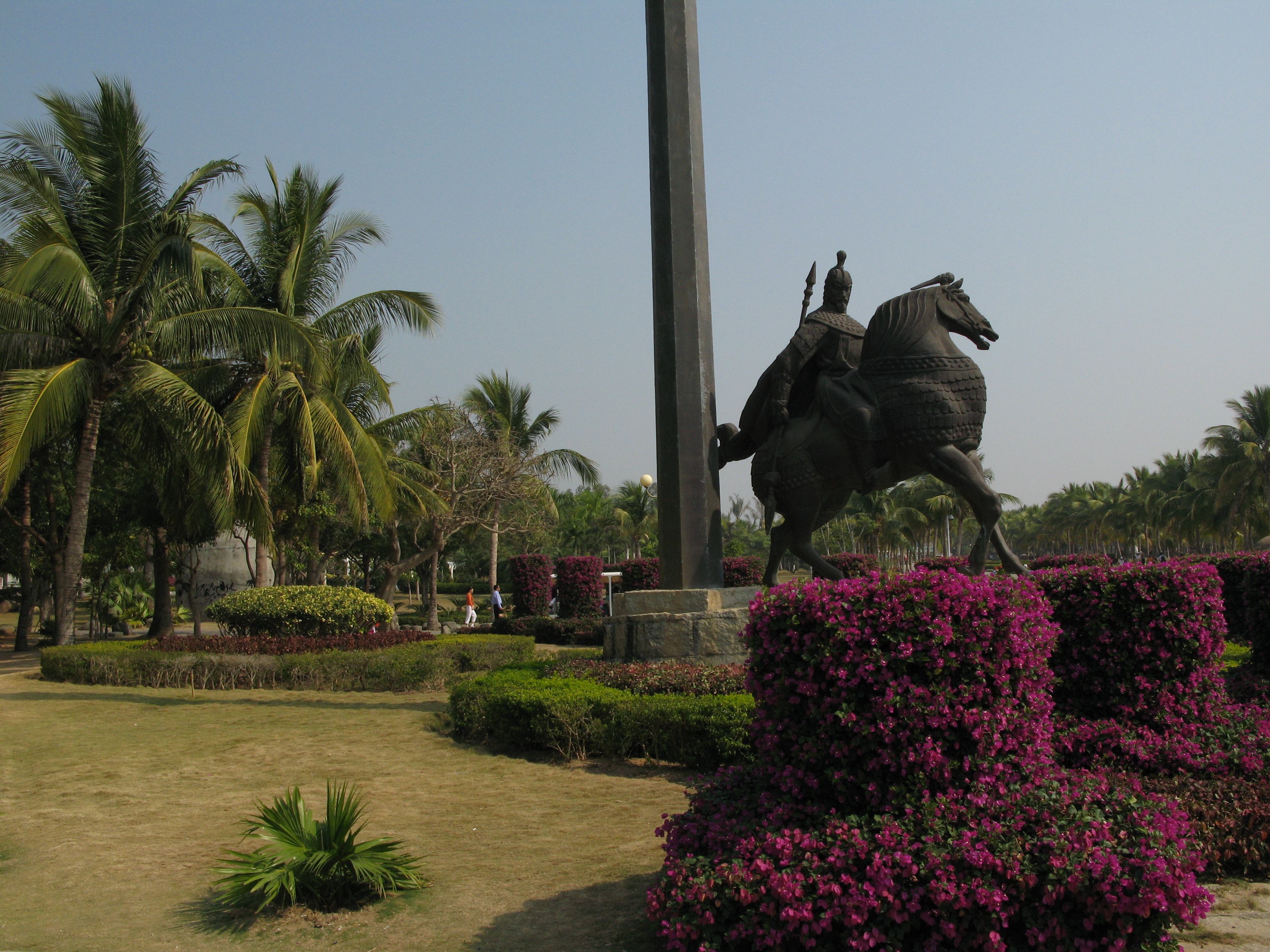|
Adlay
Job's tears (''Coix lacryma-jobi''), also known as adlay or adlay millet, is a tall grain-bearing perennial tropical plant of the family Poaceae (grass family). It is native to Southeast Asia and introduced to Northern China and India in remote antiquity, and elsewhere cultivated in gardens as an annual. It has been naturalized in the southern United States and the New World tropics. In its native environment it is grown at higher elevation areas where rice and corn do not grow well. Job's tears are also commonly sold as Chinese pearl barley, though true barley belongs to a completely different genus. There are two main varieties of the species, one wild and one cultivated. The wild variety, ''Coix lacryma-jobi'' var. ''lacryma-jobi'', has hard-shelled pseudocarps—very hard, pearly white, oval structures used as beads for making prayer beads or rosaries, necklaces, and other objects. The cultivated variety ''Coix lacryma-jobi'' var. ''ma-yuen'' is harvested as a cereal crop, ... [...More Info...] [...Related Items...] OR: [Wikipedia] [Google] [Baidu] |
Carl Linnaeus
Carl Linnaeus (23 May 1707 – 10 January 1778), also known after ennoblement in 1761 as Carl von Linné,#Blunt, Blunt (2004), p. 171. was a Swedish biologist and physician who formalised binomial nomenclature, the modern system of naming organisms. He is known as the "father of modern Taxonomy (biology), taxonomy". Many of his writings were in Latin; his name is rendered in Latin as and, after his 1761 ennoblement, as . Linnaeus was the son of a curate and was born in Råshult, in the countryside of Småland, southern Sweden. He received most of his higher education at Uppsala University and began giving lectures in botany there in 1730. He lived abroad between 1735 and 1738, where he studied and also published the first edition of his ' in the Netherlands. He then returned to Sweden where he became professor of medicine and botany at Uppsala. In the 1740s, he was sent on several journeys through Sweden to find and classify plants and animals. In the 1750s and 1760s, he co ... [...More Info...] [...Related Items...] OR: [Wikipedia] [Google] [Baidu] |
Indian Subcontinent
The Indian subcontinent is a physiographic region of Asia below the Himalayas which projects into the Indian Ocean between the Bay of Bengal to the east and the Arabian Sea to the west. It is now divided between Bangladesh, India, and Pakistan. (subscription required) Although the terms "Indian subcontinent" and "South Asia" are often also used interchangeably to denote a wider region which includes, in addition, Bhutan, the Maldives, Nepal and Sri Lanka, the "Indian subcontinent" is more of a geophysical term, whereas "South Asia" is more geopolitical. "South Asia" frequently also includes Afghanistan, which is not considered part of the subcontinent even in extended usage.Jim Norwine & Alfonso González, ''The Third World: states of mind and being'', pages 209, Taylor & Francis, 1988, Quote: ""The term "South Asia" also signifies the Indian Subcontinent""Raj S. Bhopal, ''Ethnicity, race, and health in multicultural societies'', pages 33, Oxford University Press, 2007, ; Q ... [...More Info...] [...Related Items...] OR: [Wikipedia] [Google] [Baidu] |
Zein
Zein ( ) is a class of prolamine protein found in maize. It is usually manufactured as a powder from corn gluten meal. Zein is one of the best understood plant proteins.Momany, Frank A.; Sessa, David J.; Lawton, John C.; Selling, Gordon W.; Hamaker, Sharon A. H.; and Willett, Julious L. "Structural Characterization of A-Zein" December 27, 2005, ''J. Agric. Food Chem.'' Pure zein is clear, odorless, tasteless, hard, water-insoluble, and edible, and it has a variety of industrial and food uses.Lawton, John W.Zein: A History of Processing and Use, November 1, 2002, American Association of Cereal Chemists Commercial uses Historically, zein has been used in the manufacture of a wide variety of commercial products, including coatings for paper cups, soda bottle cap linings, clothing fabric,Commission on Life SciencesBiobased Industrial Products: Research and Commercialization Priorities 2002. buttons, adhesives, coatings and binders. The dominant historical use of zein was in the t ... [...More Info...] [...Related Items...] OR: [Wikipedia] [Google] [Baidu] |
Stigma (botany)
The stigma (: stigmas or stigmata) is the receptive tip of a Gynoecium#Carpels, carpel, or of several fused carpels, in the gynoecium of a flower. Description The stigma, together with the Style (botany), style and ovary (botany), ovary (typically called the stigma-style-ovary system) comprises the pistil, which is part of the gynoecium or female reproductive organ of a plant. The stigma itself forms the distal portion of the style, or stylodia, and is composed of , the cells of which are receptive to pollen. These may be restricted to the apex of the style or, especially in wind pollinated species, cover a wide surface. The stigma receives pollen and it is on the stigma that the pollen grain germination, germinates. Often sticky, the stigma is adapted in various ways to catch and trap pollen with various hairs, flaps, or sculpturings. The pollen may be captured from the air (wind-borne pollen, anemophily), from visiting insects or other animals (Pollination syndrome#Biotic, ... [...More Info...] [...Related Items...] OR: [Wikipedia] [Google] [Baidu] |
Stamens
The stamen (: stamina or stamens) is a part consisting of the male reproductive organs of a flower. Collectively, the stamens form the androecium., p. 10 Morphology and terminology A stamen typically consists of a stalk called the filament and an anther which contains microsporangia. Most commonly, anthers are two-lobed (each lobe is termed a locule) and are attached to the filament either at the base or in the middle area of the anther. The sterile (i.e. nonreproductive) tissue between the lobes is called the connective, an extension of the filament containing conducting strands. It can be seen as an extension on the dorsal side of the anther. A pollen grain develops from a microspore in the microsporangium and contains the male gametophyte. The size of anthers differs greatly, from a tiny fraction of a millimeter in ''Wolfia'' spp up to five inches (13 centimeters) in '' Canna iridiflora'' and '' Strelitzia nicolai''. The stamens in a flower are collectively called the ... [...More Info...] [...Related Items...] OR: [Wikipedia] [Google] [Baidu] |
Involucre
In botany, a bract is a modified or specialized leaf, associated with a reproductive structure such as a flower, inflorescence axis or cone scale. Bracts are usually different from foliage leaves in size, color, shape or texture. They also look different from the parts of the flower, such as the petals or sepals. A plant having bracts is referred to as bracteate or bracteolate, while one that lacks them is referred to as ebracteate or ebracteolate. Variants Some bracts are brightly coloured which aid in the attraction of pollinators, either together with the perianth or instead of it. Examples of this type of bract include those of '' Euphorbia pulcherrima'' (poinsettia) and ''Bougainvillea'': both of these have large colourful bracts surrounding much smaller, less colourful flowers. In grasses, each floret (flower) is enclosed in a pair of papery bracts, called the lemma (lower bract) and palea (upper bract), while each spikelet (group of florets) has a further pair of br ... [...More Info...] [...Related Items...] OR: [Wikipedia] [Google] [Baidu] |
Balansa
Benjamin Balansa Gaspard Joseph Benedict Balansa, also known as Benjamin Balansa or Benedict Balansa (25 March 1825 – 2 November 1891), was a French botanist. Born in Narbonne in 1825, Balansa made numerous collecting trips for the Muséum national d'Histoire naturelle in Paris which holds most of his plant specimens. Others are in Muséum de Toulouse. His first journey, from 1847 to 1848, was to Algiers and Mostaganem in Algeria. From 1850 to 1853, Balansa returned to Algeria, collecting plants again in Mostaganem and later in Oran, Muaskar, the Northern Sahara, Biskra and Batna. From 1854 to 1855 he undertook his first trip to Asia travelling first to Smyrna and the surrounding regions in April and May, 1854. From March until October 1855 he lived in Mersin and the Taurus Mountains of Cilicia. The following year, he travelled from June until September 1856 from Tarsus to Kayseri in Cappadocia. In 1857 he settled with his family in Smyrna. From May until July 1857 he e ... [...More Info...] [...Related Items...] OR: [Wikipedia] [Google] [Baidu] |
Tonkin
Tonkin, also spelled Tongkin, Tonquin or Tongking, is an exonym referring to the northern region of Vietnam. During the 17th and 18th centuries, this term referred to the domain '' Đàng Ngoài'' under Trịnh lords' control, including both the Northern and Thanh- Nghệ regions, north of the Gianh River. From 1884 to early 1945, this term was used for the French protectorate of Tonkin, composed of only the Northern region. Names "Tonkin" is a Western rendition of 東京 ''Đông Kinh'', meaning 'Eastern Capital'. This was the name of the capital of the Lê dynasty (present-day Hanoi). Locally, Tonkin is nowadays known as ''miền Bắc'', or ''Bắc Bộ'', meaning ' Northern Region'. The name was used from 1883 to 1945 for the French protectorate of Tonkin (Vietnamese: ''Bắc Kỳ'' 北圻), a constituent territory of French Indochina. Geography It is south of Yunnan (Vân Nam) and Guangxi (Quảng Tây) Provinces of China; east of northern Laos and west of the Gulf of T ... [...More Info...] [...Related Items...] OR: [Wikipedia] [Google] [Baidu] |
Cochin China
Cochinchina or Cochin-China (, ; ; ; ; ) is a historical exonym for part of Vietnam, depending on the contexts, usually for Southern Vietnam. Sometimes it referred to the whole of Vietnam, but it was commonly used to refer to the region south of the Gianh River. In the 17th and 18th centuries, Vietnam was divided between the Trịnh lords to the north and the Nguyễn lords to the south. The two domains bordered each other on the Son River. The northern section was called Tonkin by Europeans, and the southern part, , was called Cochinchina by most Europeans and Quinam by the Dutch. Jean-Louis Taberd, in his 1838 map, called Tonkin as "Cocincina exterior" () and "Cochin China" as "Cocincina interior" (). In this classic 1838 map, the Gianh River is north of "Lũy Sầy" (an incorrect pronunciation and spelling of "Lũy Thầy") demarcating "Cocincina exterior" (or "Outer Annam") from "Cocincina interior" (or "Inner Annam"). A small river immediately north of "Lũy Sầy", ... [...More Info...] [...Related Items...] OR: [Wikipedia] [Google] [Baidu] |
Ma Yuan (Han Dynasty)
Ma Yuan (; 14 BC – 49 AD), courtesy name Wenyuan, also known by his official title ''Fubo Jiangjun'' (伏波将军; "General who Calms the Waves"), was a Chinese military general and politician of the Eastern Han dynasty. He played a prominent role in defeating the Trung sisters' rebellion. His military and political achievements included helping Emperor Guangwu of Han, Emperor Guangwu unite the empire and putting down rebellions of the Trung Sisters (in Jiaozhi, modern Vietnam) and the Wulin tribes (in modern eastern Guizhou and northwestern Hunan). He fell ill during an expedition to modern Hunan in 49 AD, and died soon afterwards. Prior to that, Ma Yuan contributed to Emperor Guangwu's defeat of the warlord Wei Xiao (), who controlled the modern eastern Gansu region. Life and career Early life Ma Yuan was a native of what is now Xingping, Shaanxi province, descended from the Warring States period general Zhao She from the State of Zhao. Qiang campaign He also subjugate ... [...More Info...] [...Related Items...] OR: [Wikipedia] [Google] [Baidu] |






